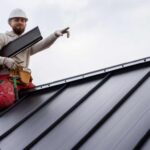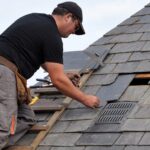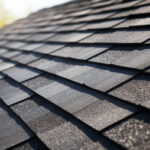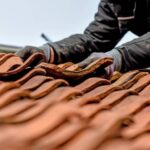Insulating your roof is essential for maintaining a comfortable home environment and cutting down on energy costs. Whether you’re starting a new construction project or upgrading your current home, understanding how to insulate a roof effectively is critical. In this guide, we’ll explore the approved methods and materials that lead to a cozy and energy-efficient home.

1. Why Roof Insulation is Important
Roof insulation plays a vital role in home energy conservation. It helps regulate the internal temperature by minimizing heat loss in the winter and reducing heat gain in the summer. This regulation not only impacts comfort but also drastically reduces energy bills.
2. The Technology Behind Insulation
Modern insulation methods leverage cutting-edge technology to offer varied solutions suitable for different types of homes and climates. Understanding these technologies allows homeowners to make informed decisions on how to insulate a roof efficiently.
2.1. Types of Insulation Materials
The choice of insulation material impacts the effectiveness of the insulation. Common materials include fiberglass, rigid foam boards, and spray foam. Each has specific properties and use cases.
2.2. Energy Efficiency Benefits
Installing the right insulation can cut heating and cooling costs by up to 20%, making it not just a home improvement but a wise investment. [More Energy Efficiency Tips](https://www.thisoldhouse.com/roofing/reviews/new-roof-cost)
3. Steps in How to Insulate a Roof
Insulating a roof involves several steps, ranging from preparation to final installation:
3.1. Evaluation and Preparation
Assessing the current state of your roof and attic is crucial. Identify any leaks, gaps, or damage that could interfere with insulation.
3.2. Selecting the Right Insulation
Choose an insulation material based on your homes requirements and your local climate. [What Roof Design Has More Slope?](https://roof-home.com/what-roof-design-has-more-than-one-slope-2/)
3.3. Installation Techniques
Whether you opt for professional help or DIY, ensure that the installation is thorough. Gaps or compressions in insulation can reduce its effectiveness significantly.
4. Approved Methods
The choice between DIY installation or hiring professionals depends on your skill level and project scope. Experienced installers guarantee operational efficiency and craftsmanship.
4.1. DIY vs. Professional Insulation
While DIY might save costs upfront, professionals offer expertise that ensures maximum efficiency and safety. [Cost Comparison for Different Roofing Methods](https://roofclaim.com/how-much-does-new-roof-cost/)
4.2. Inspection and Maintenance
Regular inspection is essential to maintaining insulation efficiency. Look for signs of dampness, mold, or sagging, which indicate compromised insulation.
Terrific Benefits of Proper Insulation
Beyond cost savings, properly insulating your roof offers numerous advantages, including enhanced comfort and increased property value.

Frequently Asked Questions
What is the best insulation material for roofs?
Fiberglass and spray foam are commonly used due to their high R-values and ease of installation.
Is professional installation necessary?
While DIY is possible, professional installation guarantees optimal results.
How often should I check my roof insulation?
Inspect your insulation annually to ensure it remains intact and performs efficiently.
This article contains affiliate links. We may earn a commission at no extra cost to you.








